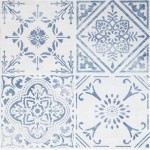Tile to Hardwood Floor Transition Strips: A Comprehensive Guide
Transition strips are essential components in flooring installations, serving not only an aesthetic purpose but also a vital functional role. They create a seamless and safe connection between different flooring materials, most commonly between tile and hardwood. This article provides a comprehensive overview of tile to hardwood floor transition strips, covering their purpose, types, materials, installation, and factors to consider when selecting the appropriate strip for a specific application.
The purpose of a transition strip surpasses mere visual appeal. It addresses several critical issues that arise when joining two distinct flooring surfaces. Primarily, transition strips mitigate height differences. Tile and hardwood floors often have varying thicknesses, and a transition strip bridges this gap, eliminating tripping hazards and facilitating smooth movement between rooms. In addition, transition strips protect the edges of both flooring materials from chipping, cracking, and general wear and tear. They also contribute to the overall stability of the floor by preventing movement and potential separation at the joint. Finally, transition strips can act as a barrier against moisture and debris, preventing them from seeping under the flooring.
Understanding the Need for Transition Strips
The junction between tile and hardwood flooring presents several challenges that necessitate the use of transition strips. The most prominent challenge is the difference in thickness. Tile, with its mortar bed, typically has a higher profile than hardwood flooring. Without a transition strip, this difference creates an abrupt edge that is both unsightly and potentially dangerous. This height difference is especially apparent when the subfloor is not perfectly level, further exacerbating the issue. Transition strips provide a gradual slope or a vertical adjustment that compensates for these discrepancies, creating a level and safe walking surface.
Another key issue addressed by transition strips is the inherent difference in the materials themselves. Tile is a hard, rigid material, while hardwood, although durable, is more susceptible to expansion and contraction due to changes in temperature and humidity. This difference in material behavior can lead to stress at the joint between the two floors. Transition strips provide a buffer zone, allowing for a degree of independent movement in each material, reducing the risk of cracking or buckling. They also conceal any slight imperfections or gaps that may occur during the installation process.
Beyond structural considerations, aesthetics play a significant role in the decision to use transition strips. A well-chosen transition strip can enhance the visual appeal of the flooring by creating a clean and polished look. It can serve as a design element, complementing the colors and styles of both the tile and hardwood floors. Transition strips can also be used to define different zones or areas within a space, adding visual interest and breaking up large expanses of flooring.
Types of Tile to Hardwood Transition Strips
A variety of transition strip types are available, each designed to address specific height differences and aesthetic preferences. The selection of the appropriate type depends on the relative heights of the tile and hardwood floors, the desired appearance, and the installation method. Several common types are described below.
T-Molding: This is one of the most frequently used transition strips, characterized by its T-shaped profile. The top of the "T" covers the joint between the tile and hardwood, while the stem fits into a gap between the two floors. T-moldings are suitable for situations where the tile and hardwood are at approximately the same height or have a minimal height difference. They provide a clean, flush transition and are relatively easy to install. T-moldings are often made of wood, metal, or laminate, offering a range of aesthetic options.
Reducer Strips: Reducer strips, also known as ramp transition strips, are designed to address significant height differences between tile and hardwood. They feature a sloped profile that gradually transitions from the higher tile floor down to the lower hardwood floor. This gradual slope minimizes the tripping hazard and creates a smooth, comfortable walking surface. Reducer strips are particularly useful where the height difference exceeds ¼ inch. They are commonly made of wood, metal, or vinyl and are available in various widths and lengths.
Threshold Strips: Threshold strips are typically used at doorways or where the flooring meets another surface, such as carpeting or concrete. They are designed to provide a durable and weather-resistant seal. Threshold strips are often made of metal, such as aluminum or stainless steel, and may feature a rubber or vinyl insert to enhance the seal. They are available in various profiles, including flat, beveled, and adjustable designs, to accommodate different height differences and application requirements.
Overlap Strips: Overlap strips are designed to overlap both the tile and hardwood floors, providing a wider coverage area and a more secure connection. They are particularly useful in situations where the subfloor is uneven or where the flooring materials are prone to movement. Overlap strips are often made of metal or vinyl and are available in various widths and thicknesses. They are generally easy to install and provide a durable and long-lasting solution.
Square Edge Strips: Square edge strips provide a clean, modern look with a square profile that seamlessly transitions between tile and hardwood. They are generally used when both flooring surfaces are at the same level or have minimal height difference. These strips can be made of various materials like aluminum, stainless steel, or wood. These provide durability and different aesthetic options to match the flooring.
Materials Used in Transition Strips
The choice of material for a transition strip is crucial, as it affects its durability, aesthetics, and suitability for specific applications. Common materials include wood, metal, laminate, and vinyl, each possessing distinct properties and advantages.
Wood: Wood transition strips offer a warm and natural aesthetic that complements hardwood floors. They can be stained or painted to match the flooring, creating a seamless and cohesive look. Wood transition strips are relatively easy to cut and install, and they can be sanded and refinished to maintain their appearance over time. However, wood is susceptible to moisture damage and may not be suitable for areas with high humidity or water exposure. Hardwoods like oak, maple, or cherry are frequently used for superior durability.
Metal: Metal transition strips, typically made of aluminum, stainless steel, or brass, provide a durable and long-lasting solution. They are resistant to moisture, wear, and tear, making them suitable for high-traffic areas. Metal transition strips offer a sleek and modern aesthetic and are available in various finishes, such as brushed, polished, or anodized. They are generally more expensive than wood or laminate but offer superior durability and longevity. Aluminum is lightweight and corrosion-resistant, stainless steel provides strength and a contemporary look, and brass offers a touch of elegance and sophistication.
Laminate: Laminate transition strips offer a cost-effective alternative to wood or metal. They consist of a thin layer of laminate adhered to a core material, typically MDF or particleboard. Laminate transition strips are available in a wide range of colors and patterns, mimicking the look of wood or stone. They are relatively easy to clean and maintain but are less durable than wood or metal and may be susceptible to water damage.
Vinyl: Vinyl transition strips are flexible and easy to install, making them a popular choice for DIY projects. They are resistant to moisture and wear and are available in various colors and patterns. Vinyl transition strips are generally less expensive than other materials but may not offer the same level of durability or aesthetic appeal. Flexible PVC is often used to allow for some movement between the floor surfaces.
When choosing a material, consider the traffic level, moisture exposure, and overall aesthetic of the space. Metal and durable hardwoods are suitable for high-traffic areas, while vinyl and laminates may be appropriate for less demanding applications. Coordinate the material and finish of the transition strip with the tile and hardwood floors to create a cohesive and visually appealing design.

Art3d Cherry 1 57 In X 120 Self Adhesive Vinyl Transition Strip For Joining Floor Gaps Tiles A179hd56 The Home

M D Building Products 36 Quot Unfinished Hardwood Trans Tile Vinyl W Anchors Screws 48909 The Home

Building A Custom Floor Transition Threshold Kraftmade Youtube

Tile Transition Strips To Hardwood Floor

How To Install A Transition Strip Tile Wood Step By Guide Awisdom

How To Transition Between Floor Surfaces Heavenly Heat

Kitchen Tile To Wood Floor Transition Ideas Options Explored

Your Complete Guide To Flooring Transition Strips Builddirect

Tile To Wood Floor Transition Ideas 11 Clever Ways Atlas Ceramics

Custom Metal Transition Strip Tile To Wood Suppliers Manufacturers Factory Direct Wholesale Hero








